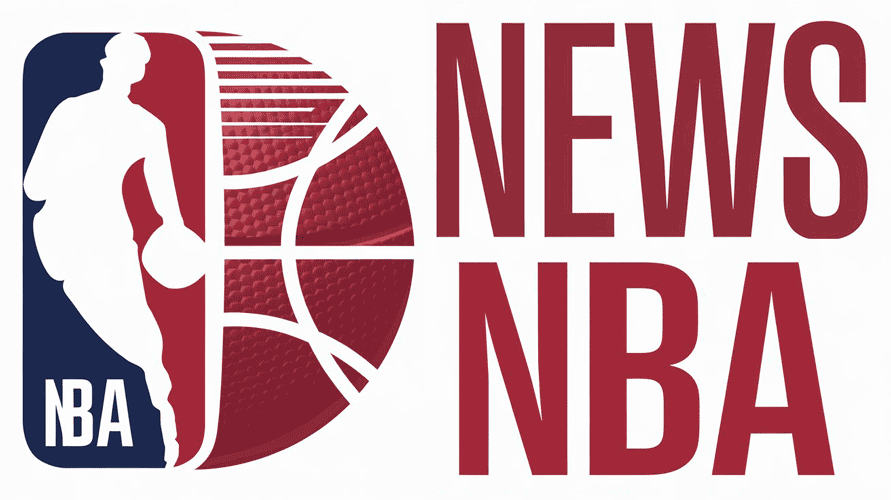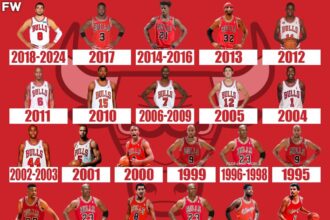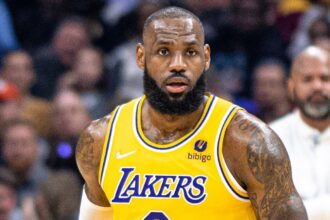The Atlanta Hawks have joined forces with the Brooklyn Nets in actively exploring the possibility of trading up from mid-to-late first-round picks in the upcoming NBA Draft, sources tell Sports Illustrated. Both teams are reportedly targeting higher selections to secure coveted prospects, signaling a strategic shift as they look to accelerate their rebuilding processes. This developing trend highlights the increasing value franchises place on maneuvering within the draft to maximize their long-term potential.
Hawks and Nets Target Draft Trade-Up to Secure High-Impact Prospects
In a strategic move to bolster their rosters, both the Atlanta Hawks and Brooklyn Nets are actively pursuing draft trade-ups aimed at elevating their mid-to-late first-round picks. Sources indicate that each franchise is on the hunt for high-impact prospects who can immediately contribute and complement their existing core. This aggressive strategy signals a willingness to part with assets-whether future draft selections or current role players-to leapfrog competitors and secure elite talent in a draft class deep with potential stars.
Insiders suggest that the teams are particularly targeting versatile wings and dynamic playmakers who can adapt quickly to their fast-paced systems. The proposed trade scenarios under discussion highlight a few standout names projected to fall into the early 20s, a range viewed by both front offices as a sweet spot for value and upside. The following table outlines the potential trade-up targets and the assets reportedly in play:
| Team | Current Pick Range | Desired Pick Range | Target Prospect Type |
|---|---|---|---|
| Atlanta Hawks | 16-20 | 11-15 | Versatile Wing |
| Brooklyn Nets | 18-22 | 12-16 | Dynamic Playmaker |
- Potential assets in trade: future first-round picks, second-round picks, roster players with expiring contracts
- Teams involved: Atlanta Hawks, Brooklyn Nets, and possibly third-party franchises looking to move up
- Motivation: Secure talent that fits immediate competitive windows and long-term rebuilds
Analyzing the Strategic Benefits of Moving Up in the Mid-to-Late First Round
Securing a higher pick in the mid-to-late first round can serve as a pivotal move for teams like the Hawks and Nets aiming to capitalize on specific draft opportunities. Moving up enhances the probability of landing a player with a rare combination of skill, athleticism, and readiness to contribute immediately. This strategy often translates into acquiring prospects who can fill critical roster gaps or become foundational pieces for a rebuild without the uncertainty that accompanies later picks.
Key strategic benefits include:
- Improved talent acquisition: Access to a smaller, more elite candidate pool.
- Reduced scouting risk: Early first-rounders tend to have clearer consensus evaluations.
- Increased trade leverage: Higher picks can be valuable assets for future transactions.
| Benefit | Impact on Team | Example |
|---|---|---|
| Talent Acquisition | Stronger prospects with higher ceiling | Player A drafted at 18th pick vs. 28th |
| Scouting Certainty | More reliable assessment data | Consensus grade improves by 15% |
| Trade Flexibility | Leverage in future deals | Pick used as key trade asset |
Expert Recommendations for Teams Navigating First-Round Trade Opportunities
Teams eyeing movement within the first round must approach trade opportunities with a strategic blend of foresight and flexibility. Experts emphasize that executing a successful trade-up hinges on understanding not only the value of the target pick but also the long-term composition of the roster. For franchises such as the Hawks and Nets, currently negotiating moves from mid-to-late first-round positions, this means identifying players who align with their developmental timeline without overpaying in future assets. Key considerations include:
- Cap space management: Ensuring the trade aligns with salary constraints.
- Draft pick value: Assessing whether current and future picks offered balance the desired move.
- Player fit: Prioritizing prospects who mesh with coaching philosophies and team culture.
Moreover, front offices are encouraged to maintain transparent communication internally and with trade partners to avoid last-minute pitfalls. A quick-reference framework helps teams evaluate offers efficiently:
| Trade Factor | Strong Indicator | Red Flag |
|---|---|---|
| Pick Equity | Balanced exchange with minimal asset depletion | Futures heavily weighted in one direction |
| Roster Impact | Addresses immediate needs and future potential | Mismatch with team’s style or timeline |
| Contract Flexibility | Leaves room for subsequent roster moves | Limits maneuverability for offseason |
The Conclusion
As the NBA draft approaches, the moves by the Hawks and Nets signal a strategic push to acquire higher-value talents through trade-ups from the mid-to-late first round. Both teams appear poised to leverage their assets and positioning in hopes of securing promising prospects who can make an immediate impact. With the draft landscape continually shifting, fans and analysts alike will be watching closely to see how these maneuvers unfold, potentially reshaping the futures of Atlanta and Brooklyn in the process.














